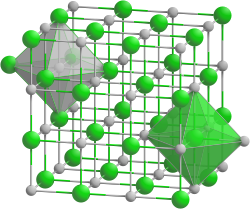 | |
| Names | |
|---|---|
| Other names Dysprosium monophosphide, phosphanylidynedysprosium | |
| Identifiers | |
3D model (JSmol) | |
| ChemSpider | |
| EC Number |
|
PubChem CID | |
CompTox Dashboard (EPA) | |
| |
| |
| Properties | |
| DyP | |
| Molar mass | 193.474 |
| Appearance | Crystals |
| Density | 7.06 g/cm3 |
| Structure | |
| Cubic | |
| Hazards | |
| GHS labelling: | |
 | |
| Warning | |
| H315, H319, H335 | |
| P261, P280, P304, P305, P338, P340, P351, P405, P501 | |
| Related compounds | |
Other anions | Dysprosium nitride Dysprosium arsenide Dysprosium antimonide Dysprosium bismuthide |
Other cations | Terbium phosphide Holmium phosphide |
Except where otherwise noted, data are given for materials in their standard state (at 25 °C [77 °F], 100 kPa). | |
Dysprosium phosphide is an inorganic compound of dysprosium and phosphorus with the chemical formula DyP. [1] [2] [3]